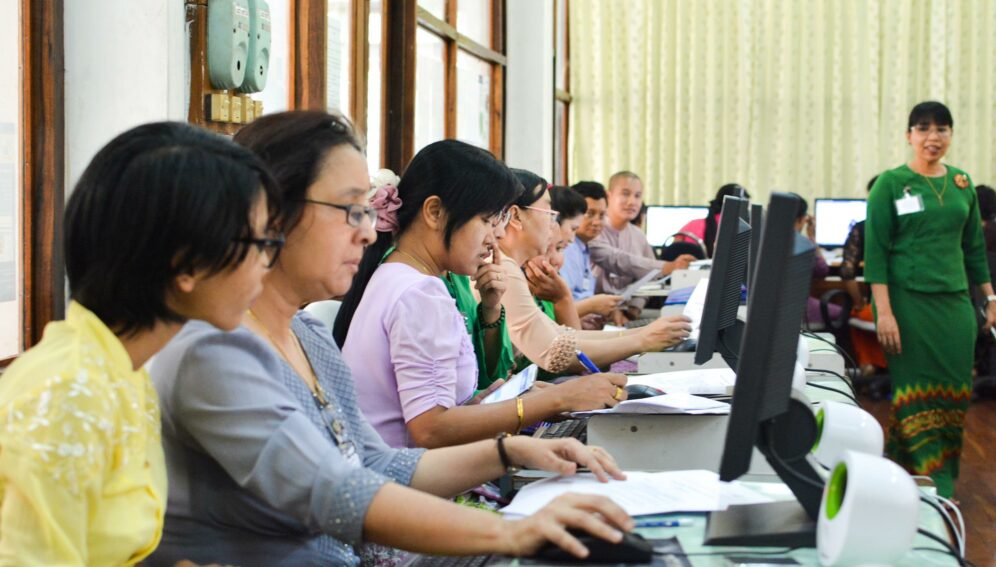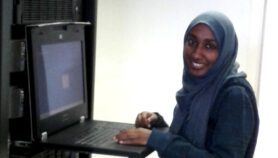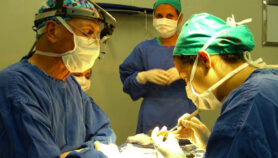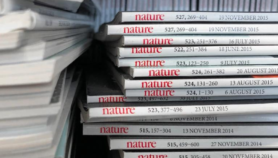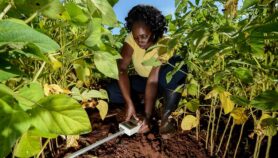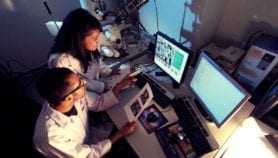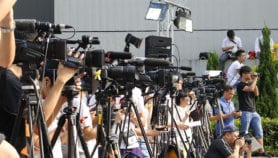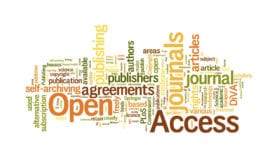By: Laura Owings
Send to a friend
The details you provide on this page will not be used to send unsolicited email, and will not be sold to a 3rd party. See privacy policy.
This article was supported by The Elsevier Foundation.
Dora Tchiasso was filled with pride and self-doubt. Graduating with a Master of Public Health from the Catholic University of Central Africa in Cameroon felt like a special achievement.
Her research was original and independent, and Tchiasso’s supervisor suggested she submit the thesis for publication in an academic journal. She was excited at the suggestion. A young student and early-career researcher, Tchiasso felt that this was recognition of her talents as a scientist and innovator.
But her excitement quickly clouded over.
“I’d never written an article before, and I didn’t have the confidence. It felt too challenging without more experience,” she tells SciDev.Net.
Even if she overcame her writing insecurities, Tchiasso says she could not have submitted her paper: the fees required to publish in a journal that could launch her budding career were too high.
“If it’s a good journal, and they publish quality articles, it’s too expensive. I couldn’t afford it,” she says.
Capacity-building
Tchiasso’s story is a familiar one for many researchers from the global South. Less equipped than their global North counterparts to communicate in the dominant style of academia, to afford high publishing charges, or sit on editorial boards, they often get left out.
But that trend may be changing. New strategies from publishing bodies aim to improve the capacity of, and contributions from, a greater breadth of researchers. Carried out alongside equity efforts from the publishing industry itself, the goal is to ensure more knowledge and innovation are exchanged around the world.
“There’s no lack of innovation coming from the global South,” says Gracian Chimwaza, executive director at the Information Training and Outreach Centre for Africa (ITOCA), a capacity-building non-profit. “What we need is to enable researchers to access what’s been published in their area and to add their own innovations at the international standards of their specialisation.”
On average, global North countries – those which are members of the Organisation for Economic Co-operation and Development (OECD) or are classified as high-income economies by the World Bank – produced more than 35,000 scientific and technical journal articles per country in 2018, according to research published in Scientometrics.
Global South countries – those classified as upper-middle income, lower-middle income, and low income – produced an average 9,700. There is also a disparity in the number of researchers in these two regions: the Scientometrics study revealed 4,351 researchers per million people in the global North in 2017, and just 713 in the global South.
A first step towards overcoming this global publishing imbalance could be to enhance capacity-building for young researchers, says Yap Boum, Africa representative at Epicentre, the research arm of Médicins Sans Frontières (MSF).
In 2021, Boum was involved in a science writing training programme in Cameroon that aimed to build academic writing skills among those involved in the country’s COVID-19 response. The programme was supported by Epicentre and the Elsevier Foundation.
“One of the first challenges we identified was that the scientists didn’t have the background on how to write,” Boum says. “They were able to do research and write a thesis, but they didn’t have the skills for developing a methodology and writing a manuscript.”
Tchiasso, one of the programme’s 45 participants, recognised this problem as well. “You really have to master the norms of article writing before you submit, and learn what is required for the journal you want to publish with,” she says.
After completing the programme, Tchiasso says she is ready to submit her first article. For Boum, that is testament to the impact of the programme.
He hopes to develop the course to involve other African countries and to link it to university curricula. “If we don’t build this capacity to write, our voices won’t be heard,” he says. “But first, we need to know how to put our voice out.”
Pay-to-publish
With the growth of open access publishing – where articles are available online at no cost to the reader – there has been an increase in journals asking for article publishing charges (APCs). These are one-time fees paid by authors of academic articles to cover publication costs, including editing, peer review, and archiving.
APCs are used by open access journals in place of the subscription fees that were paid by libraries and readers. For researchers from the global South, these fees can be exclusionary.
“Most of the journals considered the best in the world are located in the global North, and their APCs are exorbitant,” says Camila Matos, a professor in the Health Sciences Department of the Federal University of Santa Catarina (UFSC) in Brazil.
With fees close to the equivalent of a one-year salary for the average Brazilian, she says “these fees are inaccessible to us”. Journal fees range from US$800 and can reach over US$11,000.
While many journals make APC exemptions for researchers from global South countries, the waiver policies can be unclear, or hindered by lack of awareness of such policies, and a lack of consistency in their application.
One possible solution could be for publishers charging APCs to automatically waive the fees for researchers from global South countries. This was suggested in a 2020 white paper which started life as part of a discussion between academic publishers and the publishing coordinator of Research4Life, a non-profit organisation that supports access to academic content for researchers in low- and middle-income countries.*
Supported by over 200 publishers, international bodies such as the World Health Organization, and Yale and Cornell Universities, and in partnership with the Elsevier Foundation, Research4Life provides free or low-cost online access to up 194,000 leading journals and books in the fields of health, agriculture, environment, applied sciences, and legal information.*
“We want to make sure global South researchers have access to up-to-date literature and are enabled to publish their own work,” says Chimwaza, the incoming chair of the Research4Life executive council.
“Having access is key, but we also have to make sure researchers know how to take advantage of Research4Life and use it.”
The organisation has created best practice guidance for APC waivers. “We see Research4Life as a collaborative effort for working together with researchers, policymakers, and publishers to ensure that there’s inclusivity going forward,” says Chimwaza.
Collective diversity
But improving inclusivity will need buy-in from the publishers, say academics. Helping to drive that is the joint commitment for action on inclusion and diversity in publishing, spearheaded by the Royal Society of Chemistry. Launched in 2020, it is a collective of 52 publishing organisations, representing over 15,000 journals, that acknowledge biases in the industry and agree to minimum standards for inclusion and diversity.
Recognising a need to gauge the group’s state of diversity, it endorsed a set of questions for self-reported gender identity, race, and ethnicity data.
“One of the main goals was to make it less daunting of a task if done as part of a collective,” says Holly Falk-Krzesinski, chair of the joint commitment data questions subgroup and co-chair of Elsevier’s gender equity taskforce.
“We can then leverage the data to set goals about where we want to be in terms of diversity, in terms of boards, and the reviewer pool we draw from. And to track that information to understand if there are biases of any kind in the editorial review process.”
The aim is to share the data on journal homepages, so that anyone considering the journal can see its diversity trends and use them to influence their decision to submit.
The data will also provide a starting point for publishers and editorial boards to help determine successes and gaps in achieving equity goals.
“It’s exciting to think we can support data-informed diversity and inclusivity efforts in a meaningful and powerful way, and one in which we can gain trust and support from the researchers we aim to work with,” says Falk-Krzesinski.
This piece was produced by SciDev.Net’s Global desk.
This article was supported by the Elsevier Foundation, which is part of the corporate responsibility programme of global publishing body Elsevier, and is focused on sustainable development in gender, health, climate and reducing inequalities.
* This article was corrected on 27 June to show that Research4Life was not the author of the automatic APC waiver white paper, and to clarify that Research4Life is supported by publishers and universities as well as international bodies.


